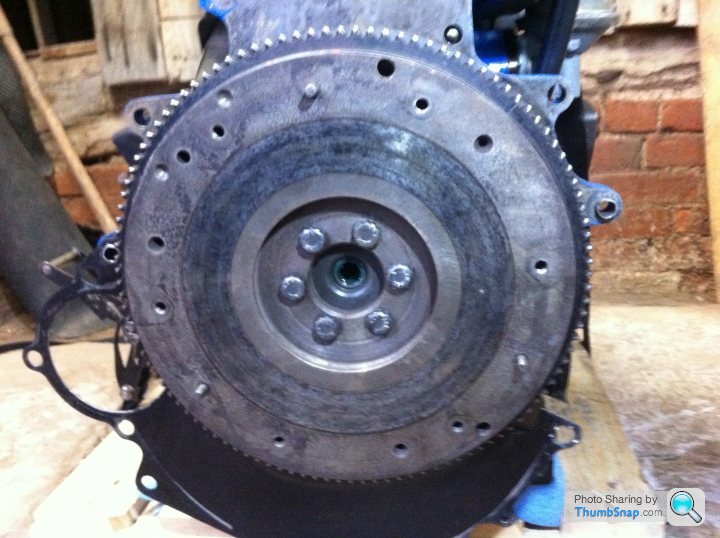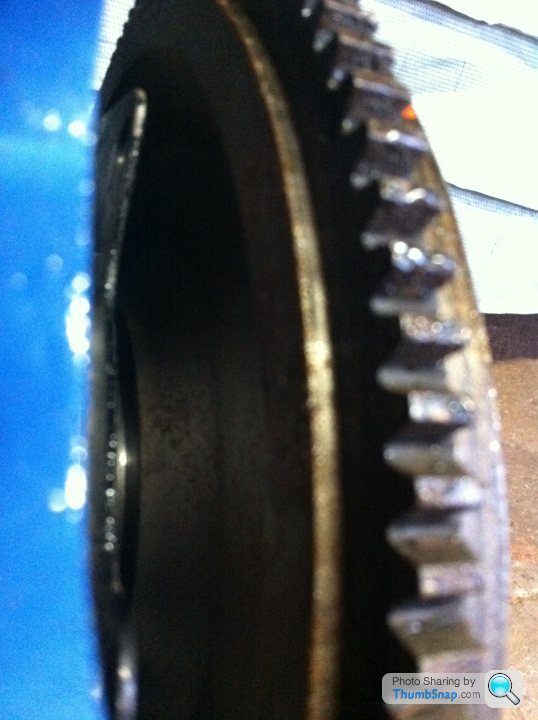Steel or cast flywheel ?
Discussion
Look at an unmachined section, perhaps on the back. If it's got a rough finish like grains of sand then it's a casting, usually iron. Steel flywheels stay smooth and shiney and will have been machined everywhere.
Your flywheel looks fairly unremarkable so is probably cast. I'd have expected it to look a lot 'cleaner' if it was machined steel.
Your flywheel looks fairly unremarkable so is probably cast. I'd have expected it to look a lot 'cleaner' if it was machined steel.
Boosted LS1 said:
^ Thanks. I asked because I've never seen one. Are they used for drag racing or motorsport?
Mike,My understanding is that steel flywheels are machined from a billet. A billet is a forging as I understand having been through a reducing process.
Normally motorsport or performance use.

I could hear a worm can opening when I typed this, and it will be around forging definition. For me it's forged if its been through a reduction process. Doesn't always mean forged close to final shape ..
Edited by anonymous-user on Tuesday 26th December 22:11
Edited by anonymous-user on Tuesday 26th December 22:28
Boosted LS1 said:
^ Thanks. I asked because I've never seen one. Are they used for drag racing or motorsport?
I dare say you will buy them machined from forged billets but I doubt someone will forge a flywheel itself.Most flywheels are cast iron, some cast steel. even a lot of high performance ones.
N.
Edited by Dollyman1850 on Tuesday 26th December 22:27
TVRMs said:
Boosted LS1 said:
^ Thanks. I asked because I've never seen one. Are they used for drag racing or motorsport?
Mike,My understanding is that steel flywheels are machined from a billet. A billet is a forging as I understand having been through a reducing process.
Normally motorsport or performance use.


N.
If the ring gear has been sweated on, the actual mass of the flywheel will be cast iron and heavy. Steel flywheels are not usually that much lighter. Lightweight flywheels are I thought the motorsport preference.
Cast iron has a grey colour to it even when polished. Steel would polish bright.
Cast iron has a grey colour to it even when polished. Steel would polish bright.
RobXjcoupe said:
If the ring gear has been sweated on, the actual mass of the flywheel will be cast iron and heavy. Steel flywheels are not usually that much lighter. Lightweight flywheels are I thought the motorsport preference.
Cast iron has a grey colour to it even when polished. Steel would polish bright.
Cast Iron heavy.Cast iron has a grey colour to it even when polished. Steel would polish bright.
Billet steel probably slightly Heavier (denser) and approx 3 x price but can be more readily lightened because the lower carbon content makes them able to resist shock loads without damage... they don't last as long though, wear faster.
The serious racing boys use Billet Alloy for weight reduction. about 5-6 times the price.
Dollyman1850 said:
RobXjcoupe said:
If the ring gear has been sweated on, the actual mass of the flywheel will be cast iron and heavy. Steel flywheels are not usually that much lighter. Lightweight flywheels are I thought the motorsport preference.
Cast iron has a grey colour to it even when polished. Steel would polish bright.
Cast Iron heavy.Cast iron has a grey colour to it even when polished. Steel would polish bright.
Billet steel probably slightly Heavier (denser) and approx 3 x price but can be more readily lightened because the lower carbon content makes them able to resist shock loads without damage... they don't last as long though, wear faster.
The serious racing boys use Billet Alloy for weight reduction. about 5-6 times the price.

RobXjcoupe said:
Billet aluminium flywheels will have steel wearfaces also for the clutch. The op hasn’t got one of those. It looks cast iron to me. Put a 5mm drill on it and see if it has a hard skin but soft underneath. That will be cast iron. Cast iron swarf is brittle also and will be tiny compared to a swirl of steel 
Yep its just an OEM one.. on a fine cut on a face plate cast just powders off the cutting tool. 

N.
Dollyman1850 said:
TVRMs said:
Boosted LS1 said:
^ Thanks. I asked because I've never seen one. Are they used for drag racing or motorsport?
Mike,My understanding is that steel flywheels are machined from a billet. A billet is a forging as I understand having been through a reducing process.
Normally motorsport or performance use.


N.
Boosted LS1 said:
Dollyman1850 said:
TVRMs said:
Boosted LS1 said:
^ Thanks. I asked because I've never seen one. Are they used for drag racing or motorsport?
Mike,My understanding is that steel flywheels are machined from a billet. A billet is a forging as I understand having been through a reducing process.
Normally motorsport or performance use.


N.
The billet stock must be forged... The forging itself is the process of changing the structure of the material to the required type suitable for its intended purpose. I suppose you could argue that the billet as a billet will have already been subject to an element of forging during its production process...

Edited by Dollyman1850 on Wednesday 27th December 10:58
Watching big lumps of dull glowing red metal being forged close to final shape is quite amazing. Spent many hours being mesmorised at Forge-masters.
Some good definitions here.
http://www.scotforge.com/Why-Forging/Glossary
Some good definitions here.
http://www.scotforge.com/Why-Forging/Glossary
Edited by anonymous-user on Wednesday 27th December 12:39
Boosted LS1 said:
I can see lots of hammering, tiz forging :-)
Or if you’re really poshhttps://en.m.wikipedia.org/wiki/Hot_isostatic_pres...
Newer design engines use a cast and forged type of crank hence they achieve higher redline rpm. When the crank is first cast all the counter weights are all in the same plane. Then before finished machining they undergo a bit of forging and heat treat with localised area and the crank is then bent into its final shape with minimal machining to spec and tolerance. This keeps the grain of the material flowing around the component rather than cutting and removing strength. It’s a delevoped mass production technique using a cheaper cast material but still achieving a high torsional strength. New Ford engines use this process. One process used on the Volvo cranks as well was to induction harden all the bearing faces before grinding. Well engineered were those cranks!
Gassing Station | TVR Classics | Top of Page | What's New | My Stuff






